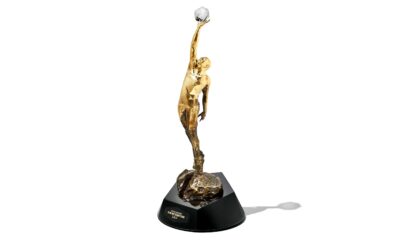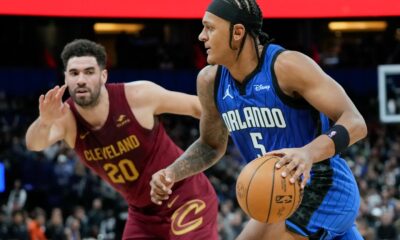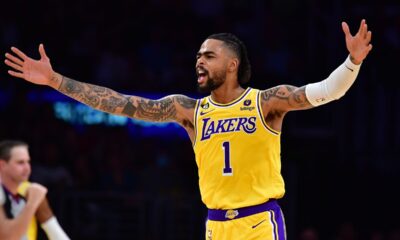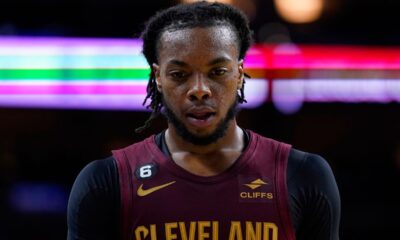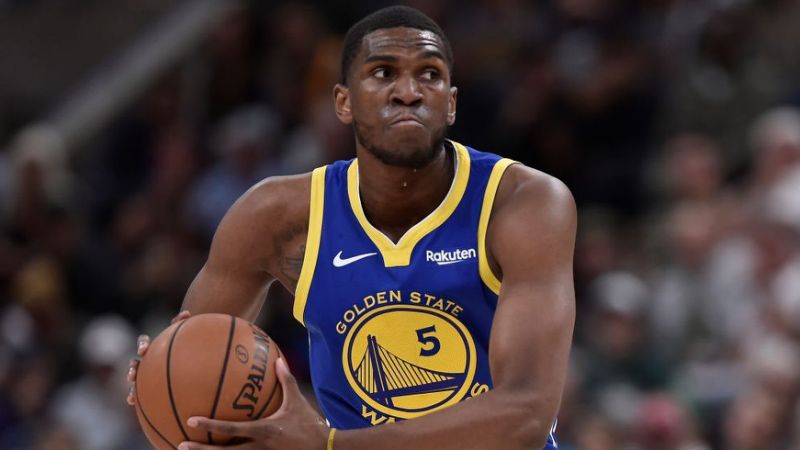
Welcome to Grading the Blue and Gold, where Golden State Warriors writer Adam Teich breaks down the good, the bad, and the ugly for each Warrior’s 2019-2020 NBA Season.
It’s difficult to think of a basketball player whose stock has fallen more over the past year than Kevon Looney. Coming off a 2018-2019 season in which he logged major minutes in the playoffs, the 24-year old UCLA product inked a three-year contract worth $15 million, widely considered a bargain deal for a player of his caliber. Heading into the 2019-2020 season, optimism around Looney was at an all-time high. Rumors began to swirl that he had developed a consistent stroke from three and was primed to grab the starting center role. To say that this optimism was short lived would be an understatement. Looney sputtered out of the gate, only logging minutes in one of the Dubs’ first 21 games. In the 20 games that he managed to see the court, Looney looked uncharacteristically overwhelmed. Let’s examine the tape on him to see why this was the case, and if the Warriors have cause for any more optimism going forward.
Let’s not mince words. Offensively, Kevon Looney was the worst center in the NBA last year. He shot 41% inside the three point line, a mark that ranks him fifth worst among bigs. Of those five, none of them come close to Looney’s 79 attempted field goals. Looney more than doubles the number of Ed Davis, who is closest to him with 34 field goals attempted. His much-hyped jump shot also turned out to be nonexistent: Looney made one three-pointer on opening night which turned out to be his only triple of the entire season. Looney’s overall field goal percentage (32.7%) was barely half the number he shot the season before.
A large driver behind his staggering drop in efficiency was the fact that Looney was plagued by injuries throughout the entire season. Looney struggled with chronic hip soreness, which forced him to undergo season ending surgery in March. He was also diagnosed with neuropathy, an incurable condition that causes pain and weakness in one’s hands and feet. As a player who carved out the majority of his shots from under the rim, this was a disaster for Looney. His injuries eroded his vertical leap, and as an already undersized big, his only avenue to open up shots was to attempt to get his defender off their feet with a series of fakes. Defenses caught on to this quickly, and thus made Warriors fans extremely used to watching him get stuffed at the rim. Even with less adverse conditions at the rim, Looney’s lack of burst would catch up to him.
For your average NBA center, that’s an easy dunk. However, Looney’s lack of a vertical leap can’t even get him a window for a shot over Solomon Hill, who stands a measly six feet 7 inches tall.
Additionally, Looney’s injuries caused him to frequently avoid contact, even against smaller defenders.
Here Looney elects to try and step around Harrison Barnes rather than try to draw a foul, and it forces him into a finish he simply doesn’t have the finesse to execute.
Unfortunately, this habit of avoiding contact bled into other facets of his game. Looney’s effectiveness as a screen setter dwindled, as he’d often lean away from defenders to nick them with the side of his body, either resulting in an offensive foul or an ineffective screen. Golden State’s offense relies on ball screens as the glue of their motion offense, and Looney’s deficiency as a screener would often derail it completely–rendering his net rating a team worst -18.2.
As for his jump shot, let’s just say if the Warriors were a marketing firm, they’d get sued for false advertising the minute anyone purchased Kevon Looney’s jumper.
It’s Joakim Noah levels of bad. Somehow his jumpshot in his rookie year looks better than it does now. He looks more like someone struggling to deadlift a basketball than someone trying to shoot it. Comedy Central could air a two-hour roast of his jumper and not run out of jokes about it.
Unfortunately, the Warriors put Looney in the position to shoot from deep because of their reluctance to play him solely at center, where he is best used. Of the ten lineups in which Looney played power forward this year, only one of them had a positive +/-. Looking at configurations with him at center, a more respectable nine out 18 lineups performed positively. Putting Looney at center maximizes his skills, and gives him an out from being a playmaker, where this year especially he tended to misread the defense and throw errant passes.
While his defensive decline wasn’t as notable as his offensive nosedive, Looney was nevertheless unsatisfactory at that end of the court. There’s no statistical calamity to point to on defense (his defensive metrics are around league average), just an unpleasant aftertaste from watching him play. One of the reasons why Looney developed the trust of Warriors coaches in the first place was his switchability.
His ability to stick with guards such as Damian Lilliard swung high-stakes games for the Dubs, most notably in their playoff series against the Houston Rockets and Portland Trail Blazers last year.
That switchability was virtually absent this year. Just watch how easily Buddy Hield glides by Looney on this drive:
There’s no great way to coach around this, but it can still be argued that the Warriors coaching staff displayed an atypical lack of strategy around Looney’s compromised physical abilities. When defending in the pick-and-roll, the Warriors would often have Looney play drop coverage, having Looney sink down to the paint as the ball handler’s defender fights around the screen. The problem with this defensive adjustment was the Dubs’ lack of perimeter defense: the other defender often would get taken out of the picture while trying to avoid the pick, leaving a backpedaling Looney as the last line of defense. Most of the time, this resulted in a foul or and-one, as Brandon Ingram demonstrates below.
Against larger opponents, Looney tended to fare better. He’s skilled at leveraging his seven foot wingspan to be in the right place at the right time. However, his blocks per game took an alarming dip from 0.7 to 0.3, and Looney tended to be easily backed down by larger opponents. Look at how little he can do against Zion Williamson:
The one positive asset Looney brought to the table was his rebounding ability. While his 5.2 defensive rebounds per game was only around league average, he shined on the offensive glass, with an offensive rebound rate of 11.2% ranking him in the 95th percentile. Unfortunately, even that number is a decline for Looney, who last year put up a rate of 14.6%.
Overall: Things aren’t looking good for Looney. Though he’s 24, his injury history already reads like a novel, and throwing a neuropathic condition on top of all that might sway the Warriors to test his value on the trade market. His two prior seasons show that he can be an effective player when healthy, and for five million dollars a team might be tempted to take a gamble. Still, Looney gave teams and fans alike many more reasons to be pessimistic than optimistic after his performance this year. His injuries prevent him from getting the worst grade possible, but given it’s doubtful that he’ll ever make a full recovery, his performance is worthy of no higher than a D.
Related

Featured Articles
-
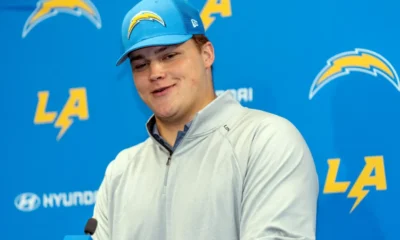

Features
/ 15 hours agoWhy Joe Alt Is the Perfect Pick for the LA Chargers
Marvin Harrison Jr. Malik Nabers. Rome Odunze. I’ve heard these names in reference to...
-
MMA
/ 2 days agoUFC 300: Holloway Sends His Blessings
When Max Holloway decisively lost his third fight against Alexander Volkanovski, his championship aspirations...
By Brandon Li -
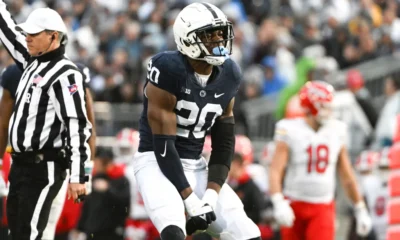

College Football
/ 2 days agoNFL Draft 2024 Scouting Report: Adisa Isaac, Edge, Penn State – Baltimore Ravens
Drafted by: Baltimore Ravens Height: 6’4” Weight: 247 Arm Length: 33 ⅞ ...
-
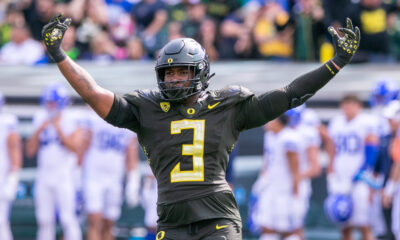

College Football
/ 2 days agoNFL Draft 2024 Scouting Report: Brandon Dorlus, DL, Oregon – Atlanta Falcons
Drafted by: Atlanta Falcons Height: 6’3” Weight: 283 Arm Length: 33 ¼ ...
